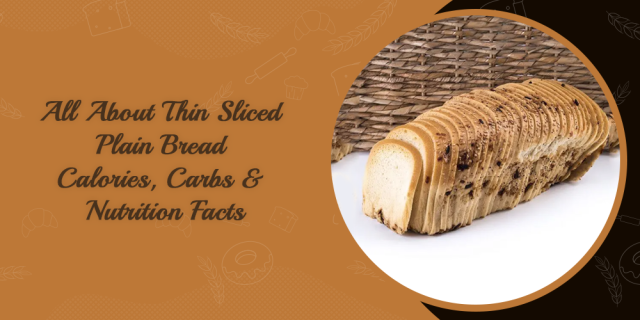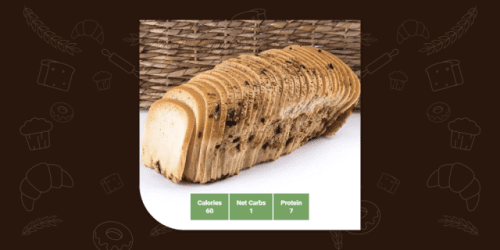
A healthy food that can be incorporated into any diet is low-carb bread. Due to their higher fiber, vitamin, and mineral content, whole-grain alternatives are encouraged by nutritionists. Different grains can be used to make bread in their whole or refined forms. The bread’s calories and the bread’s nutritional information vary by brand and type. Let’s discuss briefly in this article everything you need to know about low-carb Thin Sliced bread:
Carbs
Whole wheat bread has 13.8 grams of carbs per slice. Depending on the kind, bread can be a source of fiber and is regarded as a high-carb food. 1.9 grams of fiber are included in whole wheat bread.
Protein
A piece of whole wheat bread contains just 1.1 grams of fat, making bread a low-fat food. Per slice of whole wheat bread, there are 4 grams of protein. Although not a complete protein source, bread has a comparatively high protein content.
Vitamins and Minerals
Vitamins and minerals such as B vitamins, manganese, folate, selenium, zinc, magnesium, calcium, iron, and vitamin D are abundant in whole wheat bread. They come from whole wheat grain.
Refined bread may also contain vitamins and minerals that were added back during manufacturing. The word “enriched” occasionally appears on a package of commercially prepared bread.
Enriched foods have added nutrients back into them after being stripped of vitamins and minerals during manufacturing. Enriched foods are typically made from refined grains (grains that have been processed so that the whole grain is no longer intact). Check out our premium quality Thin Sliced Cinnamon Bread enriched with goodness and flavors; you can also consume them as keto-friendly bread.
Calories
A slice of whole wheat bread that has been baked commercially has about 82 calories. Commercially produced white bread has a little reduced calorie count (about 75 calories per slice). Because there is less fiber in this form of bread than in whole-wheat bread, the net amount of carbohydrates is often similar.
Depending on the brand, rye bread may or may not be prepared from whole grains. It can also be produced with a blend of refined and whole grains. Typical rye bread has 83 calories per piece.
Nutritional Facts:
Provides a Nutritious Source of Energy
Bread primarily provides calories (energy) in the form of carbohydrates. Carbohydrates are your body’s preferred source of energy. When you eat bread, you are providing fuel for your body’s daily activities.
Improve Heart Health
When you choose whole-grain bread, you’re also getting fiber. Whole grains high in fiber have been shown to help reduce the risk of cardiovascular disease. 3 Consuming 28 to 30 grams of whole grains per day may lower total serum cholesterol and low-density lipoprotein (LDL), also known as “bad” cholesterol.
Help with Blood Sugar Control
Our Thin Sliced Everything Bread is the ideal bread for those who focus on whole grains. More whole grains can help regulate blood sugar levels and lower the risk of type 2 diabetes, according to studies. According to research, consuming 1.5 servings of healthy grains, like bread, daily can help reduce insulin and blood sugar levels.
Support Weight Loss
Weight loss experts generally recommend foods high in fiber if you’re trying to reduce weight. If you’re aiming to produce the calorie deficit required for weight loss, fiber can help you feel fuller after eating less.
Consuming whole grains is recommended by research for achieving a healthy weight. More optimal body fat percentages and lower weight are typically found in people who consume more whole grains.
Conclusion
The best whole-grain thin-slice bread has been tried, tested, and reviewed by us. Find out which choice might be ideal for you if you’re looking for some excellent bread at Great Low Carb. We also offer a good variety of tortillas, pita bread, and bagels.



